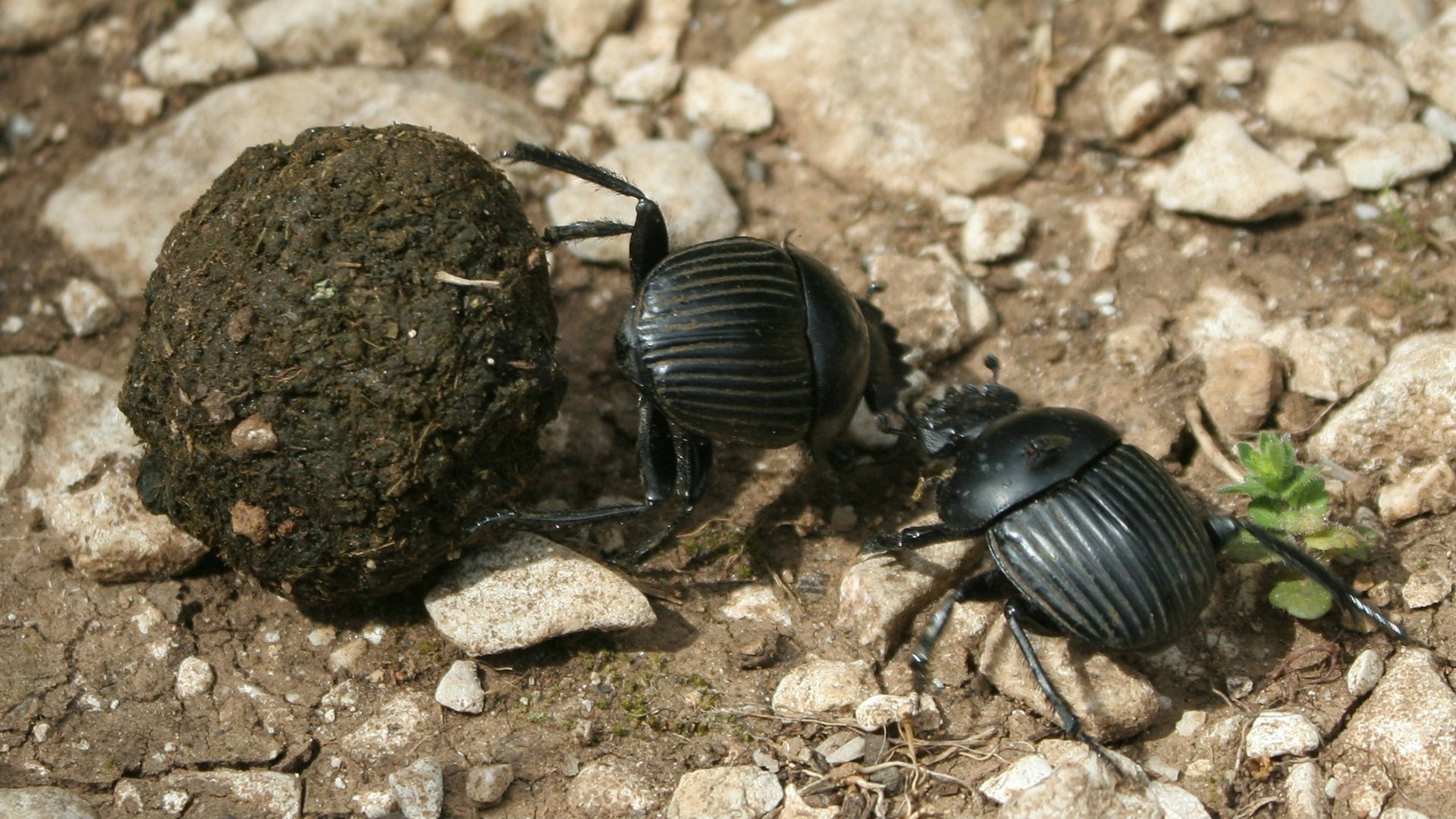Dung beetles have better navigational skills than you do
Humans are so dependent on smartphones and GPS that it’s shriveling our brains. Not so for the ball-rolling dung beetle.


Humans are so dependent on smartphones and GPS that it’s shriveling our brains. Not so for the ball-rolling dung beetle.
Scientists have discovered that the tiny, excrement-feeding insect has a photographic memory, which it uses to store a mental map of the sun, moon, and stars. That celestial image then helps the beetle navigate from the dung heap back to its nest, all while defending a smelly but much-prized ball of poo from competitors.
The dung beetle was already known in the insect world for its stellar navigational abilities. Scientists in 2013 won an Ig Noble prize for the discovery that the ball-rolling species native to Southern Africa uses the stars of the Milky Way to navigate. (Insects can perceive gradients of light that humans can’t.) When researchers outfitted the insects with tiny cardboard hats obstructing their view of the sky (yes, we found a picture) they became disoriented and couldn’t find their way home. Cloud cover confused them as well.
A new paper published in the journal Current Biology looks deeper at how the bugs store and process celestial information. Ball-rolling dung beetles shape excrement into orbs they can quickly roll away from competitors. The bugs do a unique dance on top of the balls after rolling them. During this display, a team of Swedish researchers found, they are scanning and storing an image of the sky. Comparing present conditions to the stored map of the heavens in their brains lets them travel directly from the dung heap to their nest.
Ants scan their surroundings on the ground, but dung beetles are the only insects known to navigate a mental snapshot of the position of celestial bodies. Think about that next time you plug “Home” into your car’s navigation system and mindlessly let the vehicle direct you to the freeway.